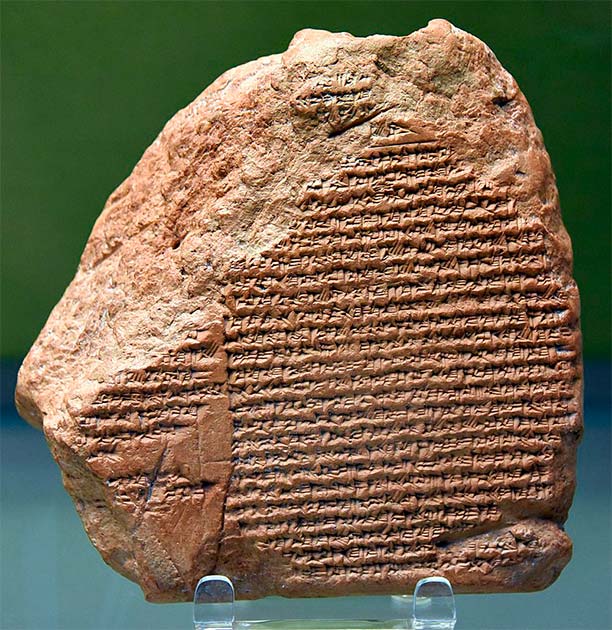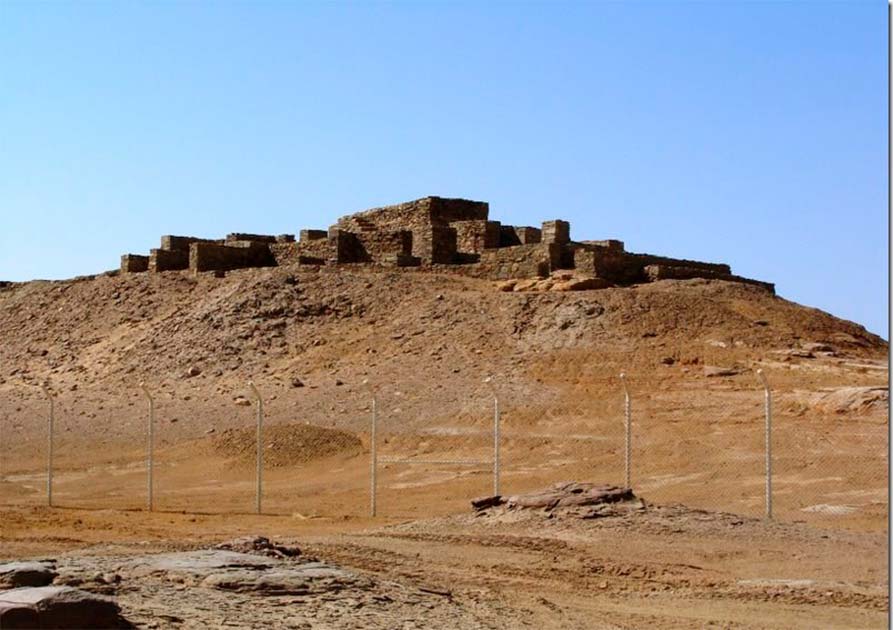Nabonidus, the final monarch of the Neo-Babylonian Empire, ruled from 556-539 BC. He claimed the throne following the murder of Labashi-Marduk, a young king who was assassinated in a conspiracy only nine months into his reign. Nabonidus’s involvement in his death remains uncertain, but he was chosen as the successor not long after. During a significant portion of his reign, Nabonidus resided at the Arabian oasis of Tayma, his extended stay sparking debate with theories ranging from illness, insanity, to a fascination with religious archaeology.
Nabonidus is often portrayed as an unconventional royal figure in historical accounts. It’s believed that his mother was a priestess of the lunar deity Sîn, to whom Nabonidus showed an extraordinary and fervent dedication. As a monarch, his overt allegiance to Sîn and disregard for the city’s vital New Year’s festival led to his unpopularity among the priests of Marduk, Babylon’s primary deity.

After successful military expeditions in Edom and Cilicia (present-day Turkey), Nabonidus left Babylon to stay in the affluent desert oasis of Tayma (Temâ) in Arabia, where he remained for several years. In his absence, his son Belshazzar governed Babylon. Nabonidus returned to the capital just in time to lead his troops against the rising Persian forces under Cyrus the Great. In 539 BC, Nabonidus capitulated to the Persians and was granted the freedom to live out his remaining years. His reign’s end signaled the onset of the Persian Empire and marked the end of the Jewish Babylonian exile.
- Queen Shammuramat, Savior of the Assyrian Empire?
- Hanging Gardens of Babylon May Have Been in Ninevah
But what occurred during Nabonidus’s missing years? Why did he leave the city he governed? What activities occupied him while in Tayma?

It’s believed that Nabonidus developed an interest in Tayma during his campaign against Edom. Tayma, a significant oasis, offered control over profitable Arabian trade routes. However, the reason for his prolonged stay—approximately ten years, around 553-543 BC—remains an enigma.
One hypothesis suggests his discomfort in Babylon, a city centered around the worship of Marduk, where he was expected to partake in public ceremonies honoring Marduk during the annual New Year’s festival. On the festival’s fifth day, the king had to humble himself before Marduk and the high priest, who would temporarily remove his crown and royal symbols, returning them only after the king had prayed for forgiveness and endured a hard slap from the priest. Additionally, on the eighth day, the king had to ask all the gods to support and respect Marduk, a ritual that Nabonidus might have found unacceptable if he regarded Sin as supreme.
Some speculate that Tayma appealed to Nabonidus as an archaeological site, where he might discover sacred inscriptions or prophecies connected to his spiritual journey.
Another theory proposes that the king fell gravely ill and retreated to Tayma’s oasis for recovery. In the Dead Sea Scrolls, a fragment known as the Prayer of Nabonidus recounts that an ulcer plagued Nabonidus, leading him to withdraw from society and stay in Tayma until a Jewish exorcist cured him after he prayed to the Hebrew God:
I, Nabonidus, was afflicted with an evil ulcer for seven years, and far from men I was driven, until I prayed to the most high God. And an exorcist pardoned my sins. He was a Jew from among the children of the exile of Judah… During my stay at Tayma, I prayed to the gods of silver and gold, bronze and iron, wood, stone and lime, because I thought and considered them gods….
- The Soothsayer, the Sibylline Books and the Last King of Rome
- Zoroastrianism: the Religion of Fire that inspired the Hebrew Bible
This legend might offer some clarity to a confusing part of the Book of Daniel, where the king referred to is called Nebuchadnezzar. Yet, Nebuchadnezzar’s son is named Belshazzar, which was actually the name of Nabonidus’s son, who ruled in his father’s absence while he was in Tayma. Hence, it’s possible that the Book of Daniel mixes up Nabonidus with Nebuchadnezzar. However, Daniel describes the king’s ailment as a form of insanity rather than an ulcer, stating: “He was driven away from people and ate grass like cattle. His body was drenched with the dew of heaven until his hair grew like the feathers of an eagle and his nails like the claws of a bird” (Daniel 4:33).
We now know that during his stay in Tayma, Nabonidus endowed the oasis with an elaborate royal complex, much of which has been uncovered in recent excavations. As for Nabonidus’s return to Babylon, it could be related to the rising threat of Cyrus and increasing disputes with Belshazzar, who was removed from his position immediately after Nabonidus’s return, along with several administrators. The Nabonidus Chronicle indicates that Nabonidus indeed celebrated the New Year’s festival in his final year as king.

The rise of Cyrus, Nabonidus’s successor, marked the end of the Neo-Babylonian Empire and heralded the dawn of the Persian Empire. Cyrus’s practice of returning sacred artifacts and priests to their original sanctuaries was soon extended to the empire’s western territories as well, allowing the Jews to return to Jerusalem with their holy vessels and start rebuilding the Temple. Consequently, the conclusion of Nabonidus’s reign signifies not only the commencement of the Persian Empire but also the end of the Babylonian exile for the Jews.
Top image: William Blake’s The Madness of Nebchuadnezzar: Does the Book of Daniel confuse Nebchuadnezzar II with Nabonidus? Source: William Blake / Public Domain.
The article ‘The Lost Years of Nabonidus, Last King of the Neo-Babylonian Empire’ is adapted from the article: Nabonidus. (2008, October 22). New World Encyclopedia .